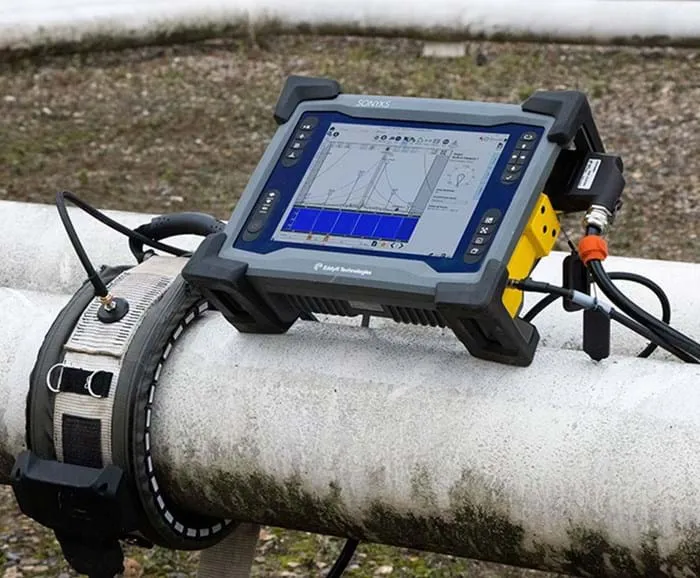Guided Waves: Overcoming pipeline transport hurdles
The transportation of oil and gas through pipelines is crucial for global energy infrastructure, however, ensuring the integrity of these pipelines is an ongoing challenge. In a recent interview with Zeki Gokce, Senior Product and Application Expert at Eddyfi Technologies, we explored how guided waves testing (GWT) is addressing the limitations in traditional inspection methods and helping companies overcome long-standing pain points in pipeline maintenance.
The importance of pipeline integrity
Pipelines are the most efficient and safest method for transporting oil and gas, and pipeline integrity refers to the ability of a pipeline system to operate safely, efficiently, and without leaks or failures throughout its intended lifespan. In the oil and gas sector, where pipelines often stretch for hundreds or even thousands of kilometers, maintaining their integrity is not just an engineering requirement, it’s a critical safety, economic, and environmental imperative.
Cost-efficiency, safety and environmental protection
Zeki Gokce explains that pipelines are the cheapest method of transporting oil, costing approximately $5 per barrel, in contrast to $15 for trains and $20 for trucks. This cost advantage is only sustainable if the pipelines themselves remain in good condition. Zeki also highlights that pipelines are an environmentally friendly transportation option compared to surface transport, because truck or rail transport carries higher risks of accidents and spills, meanwhile pipelines, if well-maintained, have fewer incidents.
Therefore, ensuring integrity isn't just about protecting assets, it’s about protecting ecosystems and avoid production shutdowns, costly repairs, and disruptions in supply chains.
The challenge of corrosion and limited access
One of the primary threats to pipeline integrity, as Gokce emphasizes, is corrosion, beacuse over time, environmental factors and the gradual deterioration compromises the structural health of the pipeline, leading to serious risks. Traditional inspection methods, like manual inspections or radiographic testing, often fall short when it comes to cost-efficiency or feasibility, especially when pipes are located under rivers, roads, or remote terrains. This is where screening techniques such as guided wave testing become essential.
Guided waves testing: a scalable screening solution
Guided wave testing (GWT) is a non-destructive testing (NDT) method transmits low-frequency ultrasonic signals, typically between 20 and 200 kHz, along the length of a pipe to detect corrosion or other potential issues in pipelines. This frequency range allows the ultrasonic signal to travel further than traditional methods, which operate in the megahertz range and require surface contact.
Zeki Gokce classifies GWT as a qualitative screening method, in contrast to quantitative approaches like conventional ultrasonic testing, which measure exact defect dimensions. As a screening tool, GWT is not intended to size flaws directly, but to identify areas of concern across large sections of pipe, making it an ideal first-line inspection technique.
Benefits of guided wave testing
- High coverage and speed: Gokce explains that a 12-inch pipe can be inspected over 25 meters in each direction, 50 meters total, in just 3 minutes. For larger pipes, such as 24 inches, the coverage can reach 100 square meters per scan.
- Volumetric inspection capability: GWT offers 100% volumetric coverage within the inspection range, unlike point-by-point methods. This makes it highly productive and ideal for large infrastructures.
- Remote access to hard-to-reach areas: One of the most powerful advantages of GWT is the ability to inspect buried, encased, or otherwise inaccessible pipelines, like those beneath roads or rivers, without excavation. This reduces downtime and cost significantly.
- Traceable and visual data output: Guided wave systems generate C-scan-based images and help identify pipe features, offering clear documentation for analysis and traceability.

Eddyfi Technologies: Innovating guided wave testing
Beyond the inherent advantages of guided wave testing, Eddyfi Technologies has introduced innovations that simplify and enhance the inspection process. Traditional GWT systems often require a laptop and multiple hardware components, making them bulky and harder to deploy in the field; in contrast, Eddyfi’s solution integrates everything into a compact, all-in-one unit that is easier to transport and operate.
According to Zeki Gokce, this design not only reduces setup time, but also allows technicians to acquire and analyze data faster and more reliably. The system utilizes C-scan visualization and provides intuitive feedback, making it accessible for both seasoned NDT professionals and newer field operators.
Adoption in Latin America
The implementation of guided waves testing is not just a North American or European phenomenon, it is being widely adopted across Latin America as well. Zeki shared that countries such as Mexico, Brazil, and Colombia have long recognized the benefits of this technology. With Eddyfi Technologies providing solutions across the region, this technology is helping Latin American companies enhance their pipeline integrity strategies, offering a powerful tool for maintaining critical infrastructure.
Addressing the oil and gas industry's pain points
For companies in the oil and gas sector, balancing inspection effectiveness, speed, and accessibility is key to ensure the integrity of its pipelines, and guided wave testing offers a unique combination of those benefits, especially when dealing with long pipelines and difficult terrain. As non-destructive testing technologies continue to evolve, GWT stands out as a critical solution for proactive maintenance and pipeline integrity assurance.
For more content, visit our Special Programs section, or our YouTube channel and LinkedIn profile.
Source: Inspenet.

